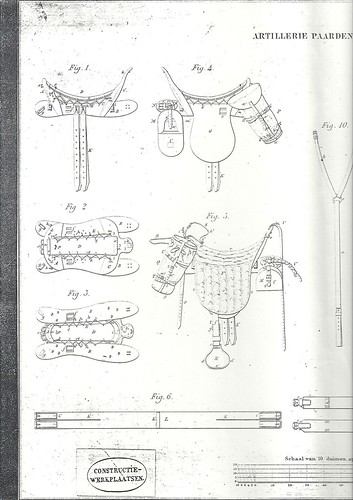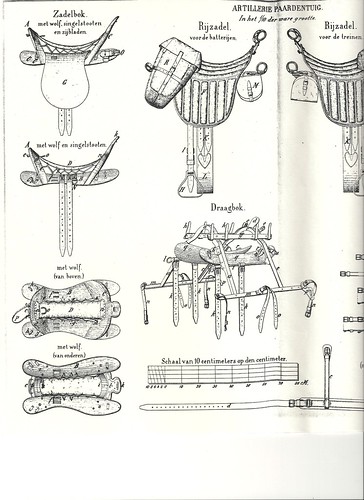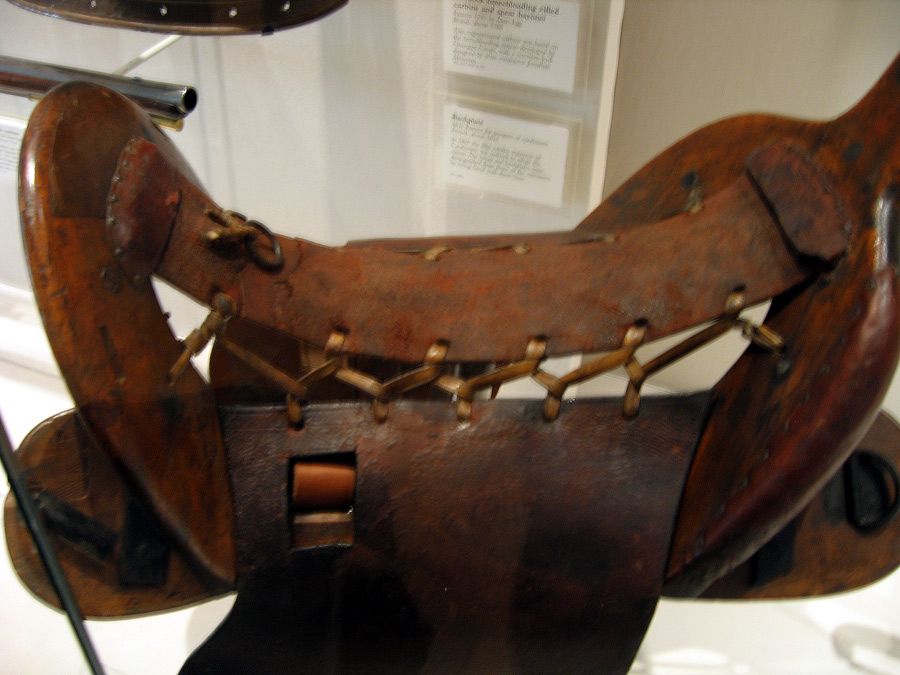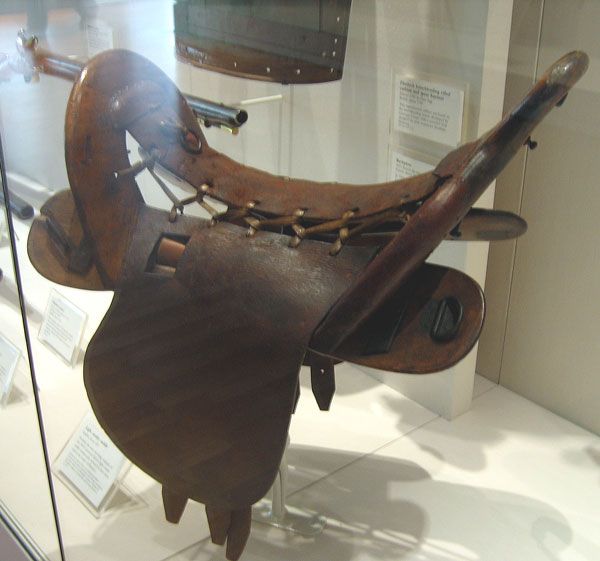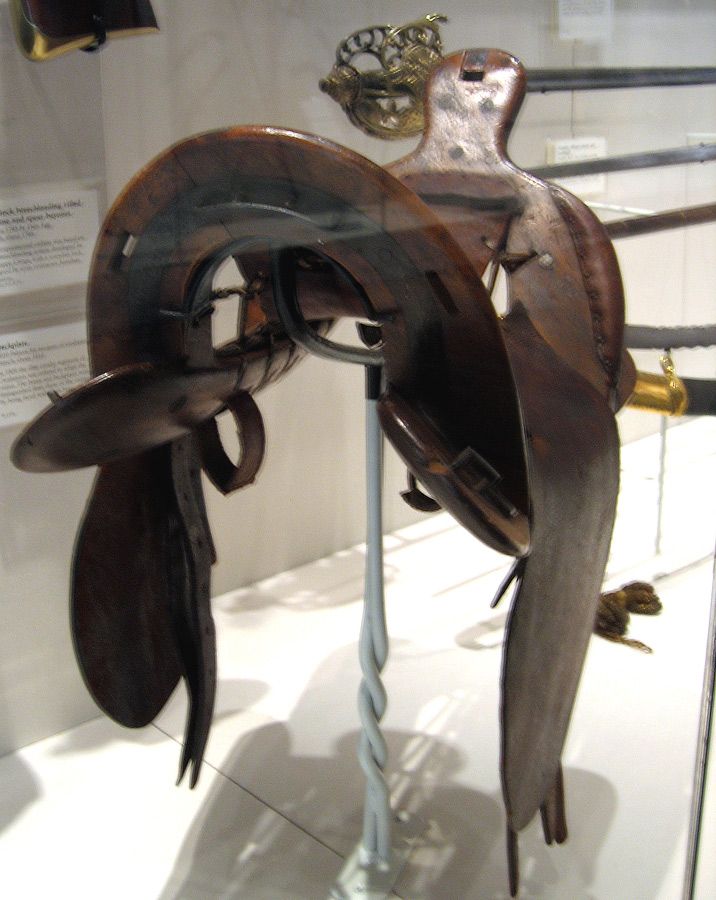Anulf wrote:The McClellan at least can't really legitimately claim Hungarian ancestry. It's pretty clearly just a modified Spanish tree saddle.
http://en.wikipedia.org/wiki/McClellan_saddle
I find this a little confusing. If Capt. McClellen went to Europe, studied the European Cavalry, observed the battles of the Crimean war, returned to the States with books and manuals to revamp the U.S. Cavalry and then designed a saddle that he claimed was a modification of the Hungarian saddle used in Prussian service,....how come the saddle was
certainly a modification of the Spanish tree saddle in common use in Mexico during this period, and which had become common in some parts of the US.
I always thought it was Hungarian only missing the suspention seat, the rider sits down on the frame, but instead it is "obviously" a common tree that he could have picked up down at the local harness shop. I'd like to know more about this Spanish saddle tree and why Capt. McClellen needed to make up a story about his saddle's design.
There's a lot of threads on that topic on the general forum. An introduction to McClellan can be found here of course, followed by a discussion of each saddle:
http://www.militaryhorse.org/studies/mcclellan/
Suffice it to say, while McClellan may have claimed it was a Hungarian saddle, there's really no evidence to support it. And, at that time, with Hussars being regarded as the model of cavalry, that was a good claim. But even as early as the 1833 saddle Spanish trees were in widespread use and varied little from the McClellan in basic features:
http://www.militaryhorse.org/features/1833.php
While there are similarities to be sure, the basic design is different enough. The Spanish Tree saddle was in common use in the United States and on the Frontier. The only really significant difference between it and McClellan's design is that it had a horn, which most McClellan's lack. Neither design requires a suspension seat. The only real evidence for the claim of Hungarian ancestry for the McClellan saddle is McClellan's apparent claim that that was the inspiration. But the saddles are better evidence that the claim was probably a bit of sales puffery.
Anulf wrote:
As for how saddle technology travels, it is true that there is only so many ways to saddle a horse using wood and leather. I think I recall seeing a photo of a "Squaw" saddle made from buffalo bones and rawhide that had the spoon cantle and pommel. Still, the Hungarian saddle seems to have been "imported" with the Hussars as they moved from army to army, and country to country. In many cases a Hungarian Hussar became the adopted country's leading military "advisor" on Cavalry,...I think this is including the U.S.
http://en.wikipedia.org/wiki/Hussar
If I'm not mistaken, didn't many of the British, "Light Dragoon" regiments become Hussars at a later date?
So this particular saddle may have Hungarian "roots" but I guess not all military saddles had to follow that same route.
The US did not participate in the Hussar mania of the 19th Century in any meaningful sense. Perhaps it was because of our relative isolation, but when the Hussar fad hit Europe the US basically sat it out. The only US units that you can find that substantially participated in trying to copy their style in any sense were militia units, at least one of which looked a lot like a German unit early in the Civil War.
Otherwise, for the US, France was the huge influence of the time, which showed itself in such diverse things as sabers and uniforms, although native patterns were very much coming into use as well. From 1845 on Frontier conditions started to have an original impact on the U.S. military and that became increasingly apparent as time went on. After France's defeat in the Franco-Prussian War there was a brief period of Prussian influence, which did have some permanent impact on the US military, but by that time the US Cavalry was near sui generis and it never participated in the highly colorful stylistic elements of European cavalry.
Really, all in all, the US Cavalry is remarkable for having skipped the entire Hussar/Uhlan/Lancer, etc., period in a way. It did show up a bit, particularly in militia units, but for the most part US Cavalry morphed into a type of light cavalry/dragoon/mounted infantry very quickly after being reestablished and, except for perhaps the Civil War, it stayed there.
